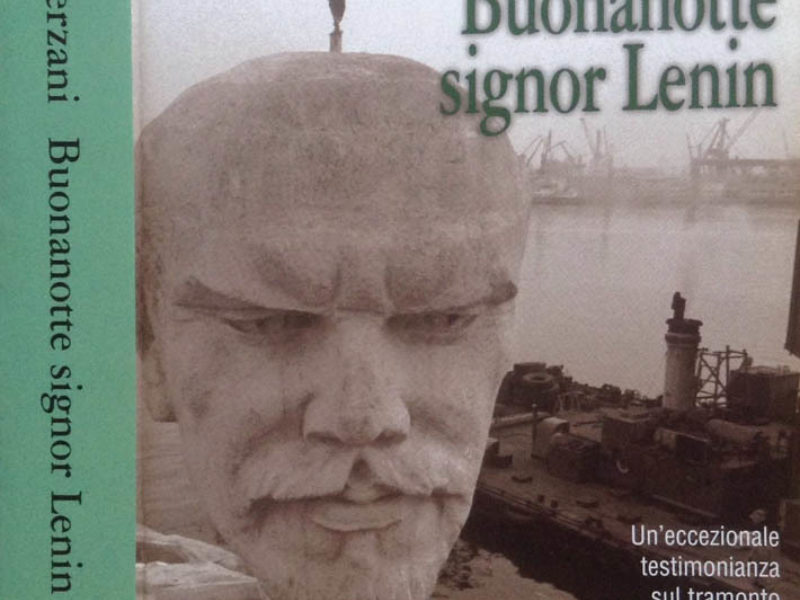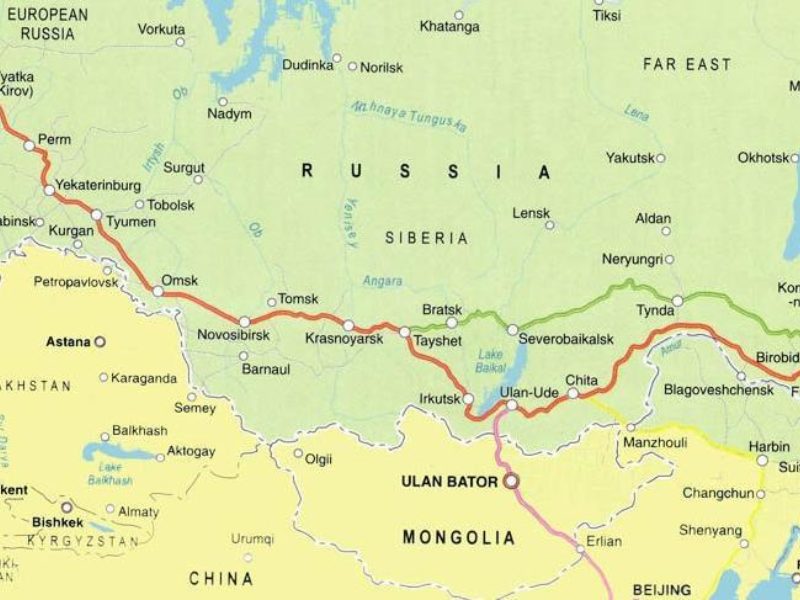"Goodnight Mister Lenin" by Tiziano Terzani
 "Goodnight Mister Lenin" by Tiziano Terzani
"Goodnight Mister Lenin" by Tiziano Terzani Good night Mr Lenin is the second book I read during a journey, the Trans-Siberian rail crossing. The first book I read by this author– Tiziano Terzani – was “A fortune-teller told me” during my travels in Indochina.
The Trans-Siberian
While I was always drawn to China, despite being a little apprehensive about its history during the 20th-century history, I have always feared Russia. It’s not because of the politics, it’s down to the regime: the gulags, Siberia, the dictatorship … Nevertheless, my desire for knowledge prevailed, because one of the reasons for travelling is to get to know a place, to delve into the local scene and so, after conquering my fear and after several enjoyable travelling experiences, I decided to embark on the Trans-Siberian … to learn. I wasn’t expecting beauty, but I was expecting an interesting journey.
 The Trans-Siberian
The Trans-Siberian While I was always drawn to China, despite being a little apprehensive about its history during the 20th-century history, I have always feared Russia. It’s not because of the politics, it’s down to the regime: the gulags, Siberia, the dictatorship … Nevertheless, my desire for knowledge prevailed, because one of the reasons for travelling is to get to know a place, to delve into the local scene and so, after conquering my fear and after several enjoyable travelling experiences, I decided to embark on the Trans-Siberian … to learn. I wasn’t expecting beauty, but I was expecting an interesting journey.
Not many people know what the Trans-Siberian is and the ones who say they do, mainly think about a fairy-tale style train leaving from Saint Petersburg or Moscow that crosses the whole of “holy” Russia to get … God knows where. In reality this is now a normal train – it has nothing to do with the pomp of the Orient Express - that actually crosses the Russian continent. I got on this train a few years ago to go from Moscow to Vladivostok. I didn’t actually get the train to travel from one place to the other, I did it for the sake of the journey itself. It’s a journey you need to organise through official channels: even if the USSR no longer exists, Russia has retained its “Soviet” culture in terms of control over the movement of tourists. They know where you get on, get off , where you stay and what you visit….
That being said, you can use your eyes to see the women bringing precooked food to the stations where the train stops, to sell them to passengers whose only alternative is a single miserable restaurant on board: one of those where the menu never changes.
The dumplings are stuffed with potatoes or other vegetables, so it’s a humble meal.
Beyond the Urals the cities have a Soviet design but are otherwise … run-down. The population does not smile very often.
The women are very beautiful, but the men are really ugly.
Local museums are worth visiting – as Terzani suggests – even if they range from natural history to ethnological to historical museums, and might only consist in two or three rooms.
The days crossing the steppes … are never-ending. It’s better to have a few books in your suitcase.
Vladivostok, the destination, was an off-limits military base until not very long ago.
In your return journey you fly over Siberia and cross 9 times zones in one go in about 9 hours: I managed to read half of “Doctor Zhivago” and actually enjoyed it. I had just finished “Good night, Mr Lenin” , which I read in the opposite order to the one it is written in: Terzani starts from Amur, which is in the far eastern corner, and travels toward Moscow, whereas I started from Moscow and moved on to Vladivostok. The description of the historic period is very interesting but the thing that really stuck in mind is the description of the environment in what became the former Soviet Republics, which I didn’t even know existed. In that journey I visited Yula and Kakazia (for an Italian that has a funny ring to it, 😉), while just this year I visited Uzbekistan.
One thing that struck me was the bureaucracy, the senseless procedures and the cruelty of these procedures. Why did I find this striking? Because – even though in the West we live in democracies - in reality, in the everyday life of companies, I see this same bureaucracy and I find it time and time again even though I’ve been in the labour market for forty years and there should have been more progress.
Unfortunately, there are still companies that elevate the best employees to the office at the back, where people who think they’ve carved out a successful career obsequiously refer to “The Management”, even in companies with just over one hundred employees in the service sector … You can add your own examples!
What do I mean by this? Changing a company’s culture requires a great deal of effort and potentially involves dealing with the outside world: a new manager with strong leadership, who cuts back on frontline staff, leadership by example from the front-line and very intense years implementing the strategy. An example comes to mind: this is connected to another book I read recently – even though it is not travel-related. It was the book about Sergio Marchionne and the change this man successfully introduced at FIAT. When is a Sergio Marchionne going to replace a Putin? Or when will see Sergio Marchionne studied as best practice in management in Universities and in companies?
Here they are again: handsome, strong, determined. During this whole journey the only men I met who were happy, serene, with a confident vision of life were those depicted in these monuments.
– Tiziano Terzani
